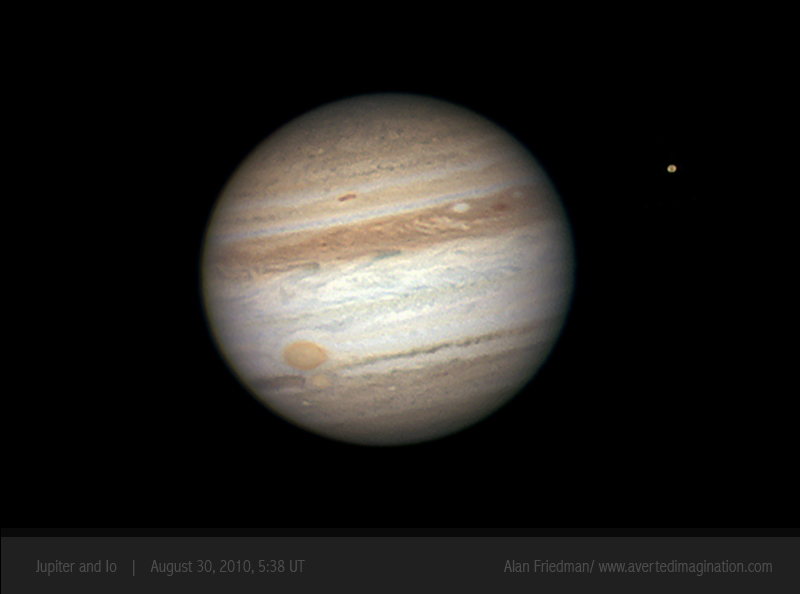One thing that has not happened since 1963 is Jupiter being this close to Earth - but the gap won't be so long until the next - 12 years, according to NASA. It's a mathematical circumstance because Jupiter's orbit is 12 times as long as Earth's. Earth laps its giant neighbor in just under 400 days so as it approache2 perihelion in March 2011, its closest approach to the sun, we will be a mere 367 million miles or so from us. What does that mean? Cool things, like seeing the Great Red Spot, a cyclone twice as wide as Earth, bumping up against "Red Spot Jr." - two planet-sized tempests battling each other must be seen to be believed.
Jupiter's magnitude of –2.94 (brighter objects have negative magnitudes and faint ones have positive magnitudes because that's how astronomers roll) means it will be second only to our Moon in the sky. Catch it September 20th at its brightest but obviously a few nights around there are fine, given clear skies.
Bonus: Uranus is at opposition on Sept. 21st so it will travel across the sky alongside Jupiter. At three times smaller and five times farther away than Jupiter, it is barely visible to the naked eye but with a small telescope it can be seen well. Point your telescope at Jupiter and emerald Uranus less than 1 degree away.

Jupiter's "kissing red spots" photographed by Alan Friedman of Buffalo, NY, using a 10-inch telescope. Photo: NASA
John Matson at Scientific American blogs gives an excellent description:
Jupiter will be visible in the direction of the constellation Pisces, appearing to the east and low in the sky at sunset, before moving toward the south as the night progresses. With a decent set of binoculars, stargazers may be able to identify Jupiter's four largest satellites, the Galilean moons Io, Europa, Ganymede and Callisto.So there you have it, professional and citizen scientists - a chance to see something you haven't seen this close since 1963. Don't forget Jupiter's moons! As NASA's Tony Philips points out, we get easy access to "planet-sized worlds with active volcanoes (Io), possible underground oceans (Europa), vast fields of craters (Callisto), and mysterious global grooves (Ganymede)."
NOTES:
(1) You will know "Like a Rolling Stone" but it's a great album and Dylan was still understandable then.
(2) September 9, 1965, against the Cubs - the first left-handed to pitch a perfect game since 1880 and sixth of the modern era. Koufax still lives in Vero Beach, FL, my old hometown (the Dodgers had spring training there for some 60 years before business reality set in and they moved to Arizona) and I met him once and told him that story and he laughed.




Comments